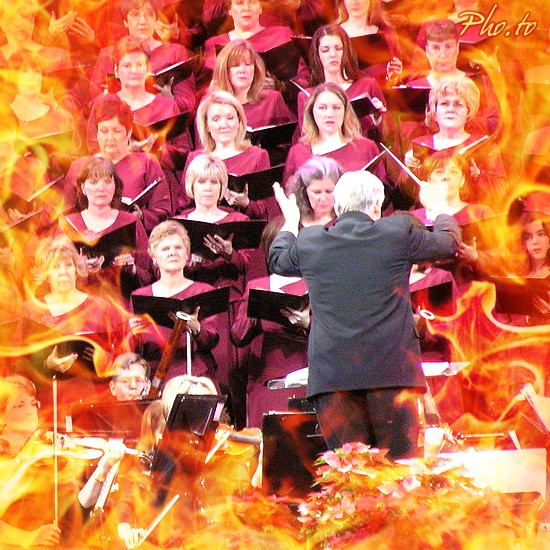I’m going to break a sacred rule which I would, myself, insist my own students follow slavishly. I’m going to comment on a movie I haven’t seen, and, god willing, will never see. Go ahead, give me an ‘F’. If I were my student, that’s what I’d do.
The movie I have in mind is Meet the Mormons, opening soon and with a glossy smile at a theatre near you. I won’t see this movie because, speaking from some experience, I’m quite sure I couldn’t bear it.
The movie is a propaganda piece hoping to toss a comfortable, non-threatening blanket over the planet’s unquenchable urge to regard Mormons as weirdos. Its production values are quite high, because the LDS Church puts plenty of money into the lenses necessary to smooth out all the harsh edges. But it is sentimental, obsequious, and unjustifiably self-congratulatory.
But my assessment of the movie is meaningless. I haven’t seen it.
Contrary reviews are easy to find. Here are a few other things I’ve heard about the movie, mostly by way of email invitations to invite my friends to see it:
The movie examines “diverse lives”, “paints a rich and unique picture”, “the movie will uplift and inspire audiences,” and the movie “challenges stereotypes”. These assessments of the movie come from fellow LDS Mormons who are, no doubt, as genuine and well-meaning as they are earnest.
Here’s the thing: they haven’t seen it, either. It doesn’t open for another week.
For the most part, this advance praise of the movie does not emerge from personal encounters with the movie. In the LDS community, where authorized opinions are what matter, personal judgments are not especially useful, anyway. The word that this movie will end world hunger comes down from the producers, and the neo-orthodox Mormon masses mobilize to make sure that as many people as possible hear that this movie which the masses have not seen will end world hunger.
As opposed as I am to the shameless propagandizing of Meet the Mormons, I am even more strongly opposed to the top-down determination of culture that has developed in LDS Mormonism. Not only doctrine, scriptural exegesis, institutional policy, music, and how long a person sits in a chapel every week are delivered to the LDS masses by higher institutional authority, but, as the neo-orthodox rapture over Meet the Mormons shows, LDS Mormons expect taste also to be delivered to them in a Salt Lake City missive.
The worship—as of a golden calf—of anything bearing SLC HQ’s stamp actually denies the diversity that Meet the Mormons sets out to showcase. Put aside for the moment the Nepali and Costa Rican individuals featured in Meet the Mormons, and consider the implications of the centralization in Salt Lake City of all the mechanisms that signify Mormon-ness.
An organization that prescribes its own authorized edition of the Bible and proscribes the use of all others fears the influence of difference. An organization that essentially prohibits—in all of its congregations on the planet—the playing of brass instruments during church is afraid of cultural fragmentation. An organization that characterizes tattoos of any sort or origin as “defiling” of self and as disrespectful to god shows that it cannot abide diversity.
The concentrated efforts of LDS authorities in SLC to determine not only doctrine, but also modes of dress, reading material, genres of music, styles of prayer, and even tones of speaking in church, and the zealotry with which neo-orthodox members redouble these efforts, reveal a disgraceful failure in the LDS community to countenance diversity.
That failure is a legacy of a time in which distinctions meant death. The mid-nineteenth century Mormons who decided to colonize the Rocky Mountains would almost certainly have been exterminated by the vicissitudes of weather, isolation, crop failure, crickets, and poverty had the pioneers not all coalesced into a single, undifferentiated mass that could, only as a whole, withstand the judgment of a hostile world. A hundred and sixty years later, LDS Mormonism still labors under the anxiety that playing a trumpet in church will lead to a starved, frozen end beneath the everlasting hills.
That is, though the twenty-first century and global context is much, much different, we still find a perplexing conviction among neo-orthodox Mormons that a good Mormon, a real Mormon, wouldn’t turn his or her nose up at a movie made by the LDS church, as though the hills still will crush the LDS people if any cracks appear between them.
The rejection of any part of the authorized, bequeathed culture has become a sign of faithlessness. For far too many of my fellow believers, a disdain for Salt Lake City propaganda—because it’s propaganda and bears all its characteristics—marks a Mormon as contrary, if not downright heretical.
Which means, of course, that there is some diversity in LDS Mormonism, after all, and not couched in ethnicity and geography, but in an aggravated, contentious, debilitating difference of belief and practice among the neo-orthodox Mormons who refuse to recognize anything but a received tradition and other Mormons seeking for a faith to call their own.
In a possible future, Mormons will recognize the vitality and unity that comes from difference as difference. Rather than scrambling to crush individuality and its expression as a virus that threatens the body, the LDS church will discover how genuine, how much more alive, individual faith is when it is individual, free to try and to exercise itself, and how much more able the individual is, when free, to strengthen the body in the manner of an elixir.
I’d probably go to see a movie about that.











